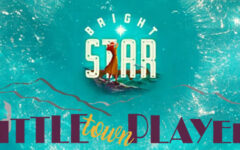
This post is a contribution from David Dufresne, CEO of Bandzoogle, a website platform for independent musicians. He has agreed to share some of his expertise in web marketing for independent musicians with our readers.
 Imagine an image, a painting that you really like. Imagine that you see this painting for the first time at an official opening in an art gallery (think a fancy, somewhat pretentious art gallery…). You like this image, the colors, the technique, etc. Beautiful. You’re impressed. Man, you love that painting.
Imagine an image, a painting that you really like. Imagine that you see this painting for the first time at an official opening in an art gallery (think a fancy, somewhat pretentious art gallery…). You like this image, the colors, the technique, etc. Beautiful. You’re impressed. Man, you love that painting.
Also, it would look awesome in your living room, wouldn’t it ? You have a chat with the artist, where she explains the concept and the process behind creating the painting, the materials used, what it means to her, what inspired it. She tells you a bit of her life story, and how and why she became a painter. You have a glass of wine; you discuss the painting with a few more people. They also like it a lot. Wow. Amazing art.
At that exact moment, this image, on that wall, might be worth hundreds of dollars to you. Maybe even thousands. If you really wanted it for yourself, and had the means, that’s what you would have to pay, and you know it.
OK. Stop. Now, forget the art gallery. Think of the exact same image that you liked a minute ago. But imagine if the first time you saw it, it was on a wall at an Ikea store, on a busy Saturday morning, surrounded by shopping carts and loud kids. You went because you needed new bed sheets. And there are 22 frames of that exact same wonderful image, lined up in a bin underneath it, for $29.99 each. No mention who the artist is. The picture is framed in something that could be either plastic or wood. Probably plastic.
You might still think the image would look great on your living room wall. Yes. But at that moment, it’s definitely worth a maximum of $29.99 + tax to you. Or, maybe you love the image, but you don’t ever want Ikea frames on your walls (you big snob)… so for you, right now it’s worth something like $0.00… even though you really love that image! Sorry, but your “wall real estate” is worth more than the frame.
So ask yourself, how can you explain the difference in perceived value for the exact same image at the gallery opening, and at Ikea?
Many possible answers here:
- the perceived scarcity (only one original available at the gallery, and others might want it too)
- the personal connection with the artist
- the setting (fancy gallery, the free wine, other art lovers around)
- the narrative, the back story you’ve associated to the art
- the materials (the original vs. the copy)
- the branding (maybe for you Ikea = cheap… but this artist and this gallery = cool and eclectic)
The list could go on. All of this is the context. The artistic content (the image) has little value by itself. But, content put into context, it becomes part of an experience. This experience can be worth a lot (buying original work straight from a cool artist on opening night), or it can be worth something, but a smaller “something” (buying a frame at Ikea).
Music is the same! For a fan, music is content. But, what is its context ? The amazing song you just wrote wouldn’t have the same value if your name was Rhonda Vincent (or Daily & Vincent, or whatever) and wrote the exact same song. Before anyone else has engaged emotionally with it, and had an enjoyable experience with it, I’m sorry but it’s only worth something to you. So, think about how your music can be valued, in terms of narrative, personal connections, perceived scarcity, branding, etc. Technology can help, by helping you create a narrative and a branding on your website (your bio, your design, your pictures) that make fans interested to hear more of your music.
Streaming services like Pandora or Spotify can help create contexts where new fans will discover your music. Communicating with your fans using your mailing list, blog, Facebook, Twitter, etc. can help create personal connections that make your fans attach even more value to your music. You create great experiences when you put on an amazing live performance, and promote it using online and offline tools. So, you need to be creative in making art, but also in creating contexts, and letting others create many and diverse contexts in which this art can be part of enjoyable and valuable experiences.
Put more simply, your music, by itself, isn’t worth much. It’s when put into context, when it becomes part of your fan’s enjoyable experience, that it becomes valuable. That can mean someone buying 2 CDs, a t-shirt and a poster at the merch table, or it can mean someone buying one track for $1.29 on iTunes.
Art gallery or Ikea? The role of technology tools is to help you multiply those possible contexts, and monetize them when you can.







